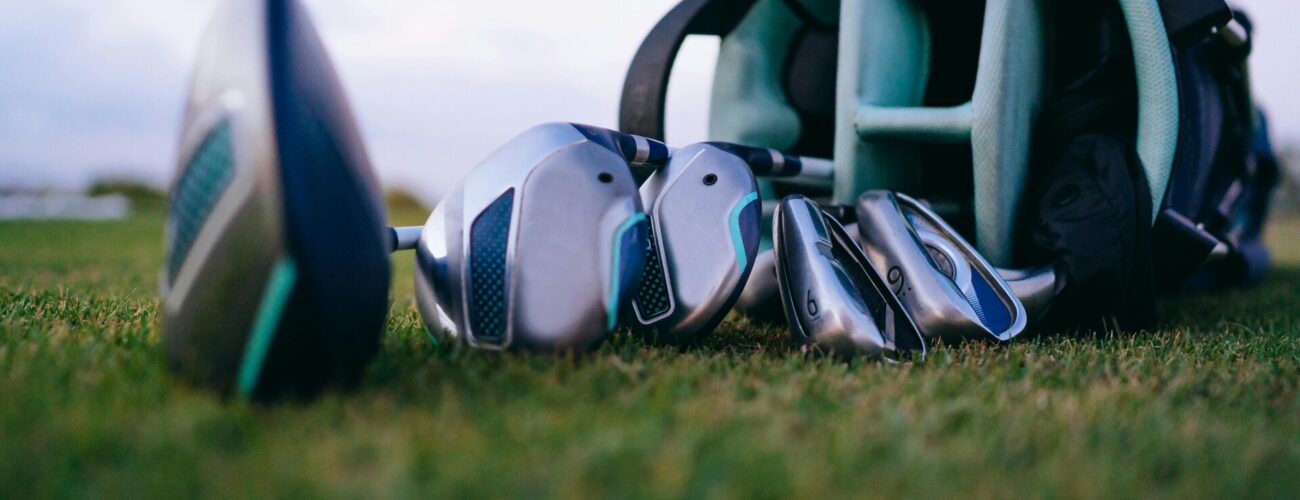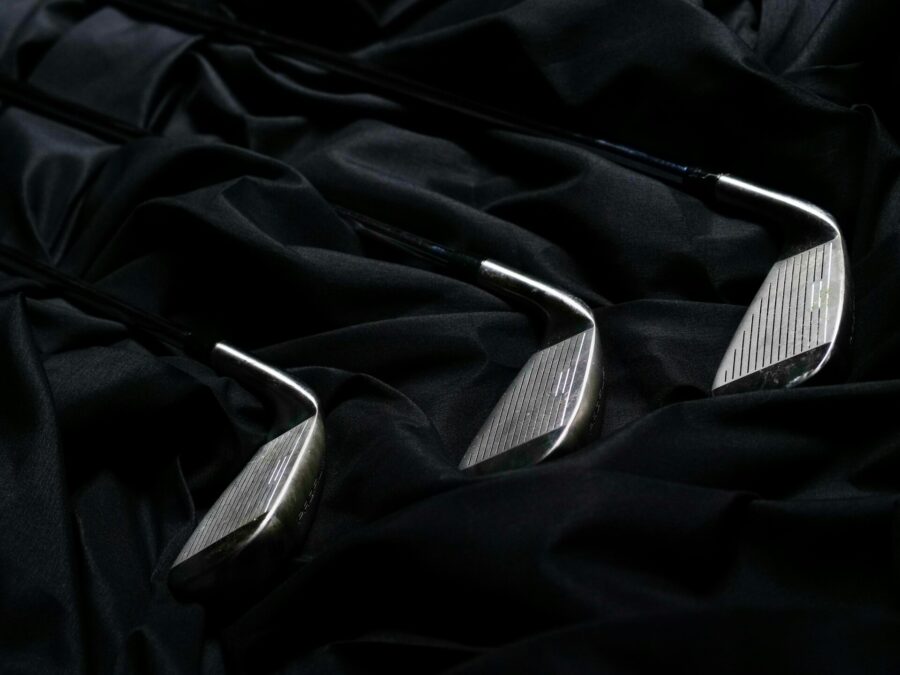

How to Pack Golf Clubs – Secure Your Gear for Safe Transport
Posted in How-to,Moving Tips & Tricks on May 23, 2024
Packing for a move and wondering how to pack golf clubs safely? In this guide, we’ll explore secure packing techniques that ensure your golf gear arrives in a new state in pristine condition. From selecting the right cases to cushioning strategies, our tips will help you protect prized clubs with confidence. Get ready to tee off once more without missing a beat!
How to Pack Golf Clubs for a Long-Distance Relocation
When you plan a relocation, making sure golf clubs are well-packed is crucial for a stress-free move. Begin by thoroughly cleaning and covering them with protective head covers. To shield the club heads from scratches, particularly those of irons and putters, envelop them in bubble wrap.
Group the clubs together tightly to reduce movement within the bag
Opt for a padded travel bag – hard cases are ideal for maximum protection.
Stuff any remaining spaces with cushioning materials or towels (if you prefer alternatives) to cushion against jolts.
For those using soft bags, incorporating a stiff arm protector is wise to prevent any damage from impacts. As you prepare for the journey and start saying bye to friends, these steps ensure the golf equipment is secured and ready for a new adventure.
Prepare the Golf Club Collection for Packaging
When planning to relocate, preparing golf clubs for the move is a crucial step that involves more than just physical packing. It focuses on ensuring each club is in the best possible condition for transport. This process starts with a thorough inspection of each club for any signs of wear or damage. Addressing these issues beforehand can prevent minor problems from becoming major ones during transit.
Each Club Has to Be Cleaned
Each club requires thorough cleaning to ensure it remains in optimal condition, particularly before a move. Use a soft brush or a specialized club cleaning tool to gently scrub the club heads, paying extra attention to the grooves where dirt and grass tend to accumulate. For stubborn stains or dirt, dampen a cloth with soapy water and carefully wipe the heads.
Avoid using abrasive materials or excessive water, especially on woods and drivers, to prevent damage. After cleaning the heads, wipe down the shafts with a damp cloth to remove any grime or oils.
Finally, dry all parts of the club completely with a soft, dry towel. This not only maintains the condition of the clubs but also ensures they are ready for immediate use once the relocation is done.

Purchase the Appropriate Packaging Materials and Supplies
Selecting the right packaging materials is necessary when preparing golf equipment for a move. Different options for cases and boxes are available, tailored to the needs and preferences of the owner:
- Hard cases offer the best protection with rigid exteriors that withstand impacts during transit.
- Soft bags provide flexibility and are lighter but need additional padding for safety.
For wrapping and cushioning, several materials are recommended so that the equipment remains secure and undamaged:
- Bubble wrap is ideal for wrapping club heads, especially irons and putters, to prevent scratches and dents.
- Foam padding is useful for lining the interior of cases or bags, providing a cushioning layer that absorbs shocks and keeps the equipment in place.
- Packing peanuts or air-filled plastic wrap are good options for filling voids within the case or bag so that the items do not shift during the move.
These materials help in protecting the equipment, ensuring that it arrives at the destination in the same condition as it was before packing.

Choose the Right Packaging Method For the Task
Selecting the ideal packaging method is crucial when preparing to pack for the move, especially for sensitive items like golf equipment. The process should begin by assessing the needs of each piece so that the chosen packaging solutions adequately address the potential challenges.
This includes deciding between various types of cases, whether a sturdy hard case for maximum protection or a flexible soft bag enhanced with additional cushioning materials. Key elements such as bubble wrap and foam padding should be used to securely wrap club heads and shafts, effectively preventing any movement that could lead to damage. This approach should be an integral part of the relocation checklist, guaranteeing that these valuable items are thoroughly protected throughout their journey.
You Can Opt For Professional Packaging Solutions as Well
For those looking to organize packing to relocate, a moving company’s professional packaging services offer a reliable solution, especially when dealing with sports equipment. Engaging experts in moving cross country and packing guarantees that each item gets relocated safely. Their deep experience and access to high-quality materials will greatly diminish the risk of damage.
Conversely, the DIY approach provides the advantage of customizing the protection to each item’s specific needs, with hands-on involvement. The truth is that you know your equipment best, so protecting them can be an easy task. Whether opting for professional services or managing the task personally, the goal remains the same – to ensure that sports equipment is carefully packed and transported without issue.

Step-By-Step for Packing the Clubs – Start With Using a Secure Bag
Begin by opting for a sturdy bag that is necessary for the safe transportation of golf equipment. Get a secure case, prioritizing hard options for their durability and impact resistance or padded soft cases for their flexibility and convenience.
This initial step is crucial in protecting the gear and relocating without any stress, effectively shielding it from potential damage during transit. Select a sturdy bag, to prevent things from breaking and make sure the equipment remains in pristine condition throughout the journey.
Padding Is Needed for Woods and Drivers
When packing larger sporting equipment like drivers and woods, particularly for the first time, it’s essential to use headcovers and additional padding. These precautions offer an extra layer of protection against potential impacts and jolts that may occur during transit. Apply headcovers to each piece.
Moreover, wrapping them in bubble wrap or soft cloth provides an additional buffer, reducing the risk of cosmetic and structural damage. This approach ensures that fragile items remain well-protected throughout the packing sports equipment process, maintaining their condition for future use.
Bundle Putters, Wedges, and Irons Properly
To easily package sports equipment, combining putters, wedges, and irons together proves to be the most efficient method. This strategy not only saves space but also diminishes the likelihood of scratches and other forms of damage. Utilize soft and flexible materials such as bubble wrap, specialized golf wraps, or towels to individually wrap each piece.
Afterward, secure them collectively using rubber bands or velcro straps. This approach serves as one of the most beneficial packaging strategies, ensuring that the items remain aligned and prevent clanging against each other, resulting in a hassle-free packaging experience.
Voids Need to Be Filled With Cushioning Materials
Making sure that cushioning materials fill empty spaces is crucial during golf equipment transport. This practice prevents items from shifting and potential damage during the journey. Soft materials like bubble wrap, foam padding, or even clothing can be used to snugly fill any gaps within the bag or golf travel case.
Adding this task to a checklist guarantees that all equipment is securely nestled, minimizing movement and providing an additional layer of protection. This simple yet effective strategy helps protect all belongings during the transport process.
Label and Secure the Golf Bag
After packing all items, the next vital step is to label and secure the bag. To enhance protection, place the bag inside a cardboard box of suitable size, surrounded by materials to absorb shocks. This two-layer safeguarding is particularly helpful when entrusting items to external movers.
Seal the box firmly with durable packing tape and ensure it’s properly labeled with contact information, destination address, and “fragile” warnings for careful handling. Utilizing moving labels aids in identifying the contents and provides essential handling instructions.
Ship the Bag or Choose to Transport It Yourself
Several factors may affect the decision of whether to ship the bag or handle transportation personally. While most airlines accept luggage containing sports equipment, it’s essential to confirm size and weight restrictions in advance.
For those opting to transport golf clubs themselves, preparing for TSA inspections by either leaving the bag unlocked or using a TSA-approved lock is advisable. Adding identification to the bag can aid in locating it if it gets misplaced. Alternatively, you can opt to hire long-distance movers specializing in transporting sports equipment, offering peace of mind with insurance options. One such option to explore is the Cross Country Movers company.
Hire a Professional Long-Distance Moving Company
Choosing a professional long-distance moving company is important for a smooth relocation process, especially when transporting valuable items like clubs. To hire a reputable company, start by researching and comparing several options. Look for companies that specialize in cross-country moving services and have positive reviews from previous customers.
Verify their credentials by checking if they are registered with the Federal Motor Carrier Safety Administration (FMCSA). This can be done through the FMCSA website, where you can also check their safety record and any complaints filed against them. Additionally, request quotes from multiple companies and compare their prices, services, and insurance options to make an informed decision.
Red Flags to Know When Choosing a Company
Dishonest long-distance moving companies may exhibit one or more red flags, indicating potential risks or scams. It’s essential to be vigilant and thoroughly vet any company before entrusting them with your belongings. Look for red flags such as these:
- Excessive upfront deposits or payment demands,
- Lack of a physical address or refusal to provide one,
- Unclear or vague contracts with hidden fees,
- Limited or no information about their licensing and insurance,
- Poor customer reviews or a history of complaints filed against them,
- Pressure tactics or high-pressure sales techniques,
- Refusal to provide a written estimate or contract,
- Inability to provide references or proof of successful past moves.
Cross Country Movers Can Provide You With Best Services
All in all, when it comes to relocating golf clubs and other belongings cross-country, hiring a professional moving company is the best move. Choose a long-distance moving company with a solid reputation and positive reviews. Expert movers could provide professional packing services for golf clubs, so you can immediately cross off this task from the to-do list. For top-notch services and peace of mind, contact us, Cross Country Movers, today. Let us handle your relocation needs with care and efficiency.
Frequently Asked Questions
Should I Disassemble All Parts of My Golf Clubs for Packing?
While it’s not always necessary, disassembling woods and drivers can be beneficial as it reduces the risk of damage to their heads, particularly if they’re delicate or have adjustable features. However, irons and putters generally don’t require disassembly unless you prefer to pack them separately for organization.
What Is the Best Type of Golf Club Case for Air Travel?
The best type of golf club case is typically a hard case, as it offers superior protection against impacts and rough handling. Hard cases are durable and sturdy, providing a shield for clubs against potential damage. They’re designed to withstand the rigors of air travel and offer peace of mind, knowing that the valuable equipment is well-protected. However, it’s essential to ensure that the case meets airline size and weight restrictions.
How Can I Ensure My Golf Clubs Are Covered by Insurance During a Move?
Relocation companies offer coverage for personal belongings, including sports equipment, during relocation. Additionally, you can purchase additional coverage through the moving company or a third-party insurer to provide comprehensive protection for the clubs and other valuables. Be sure to read the policy carefully to understand any exclusions or limitations regarding coverage.
What Are the Common Mistakes to Avoid When Packing Golf Clubs?
Wrap each club individually in soft materials like towels or bubble wrap to prevent scratches and damage during transit. Avoid overcrowding the case to prevent clubs from banging against each other, which can cause dents or other forms of damage.
Can Professional Movers Help With Packing and Transporting Golf Clubs?
Yes, professional movers can indeed help with packing and transporting clubs, providing expertise and making sure the equipment arrives safely at its destination. Many moving companies offer specialized services for sports equipment, including clubs. Professional movers have experience handling delicate items and can provide the necessary materials and expertise to protect the clubs in transit.





